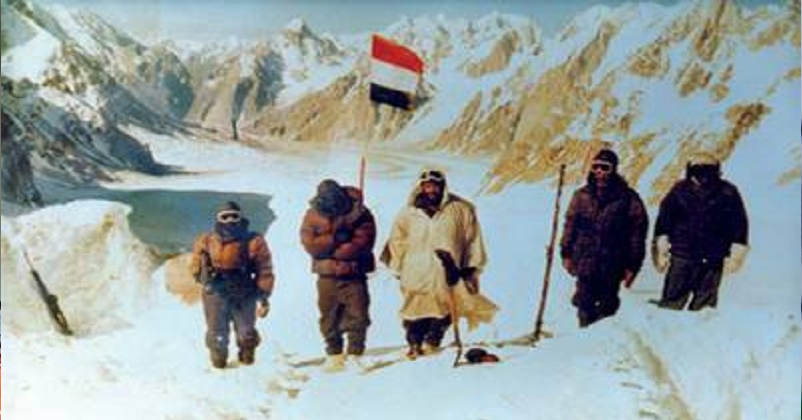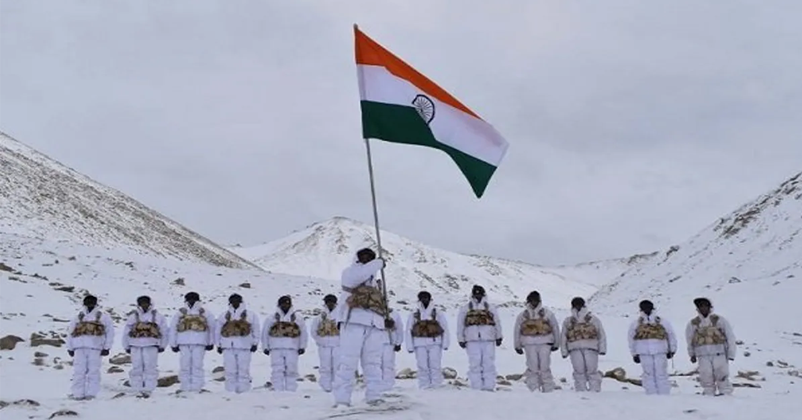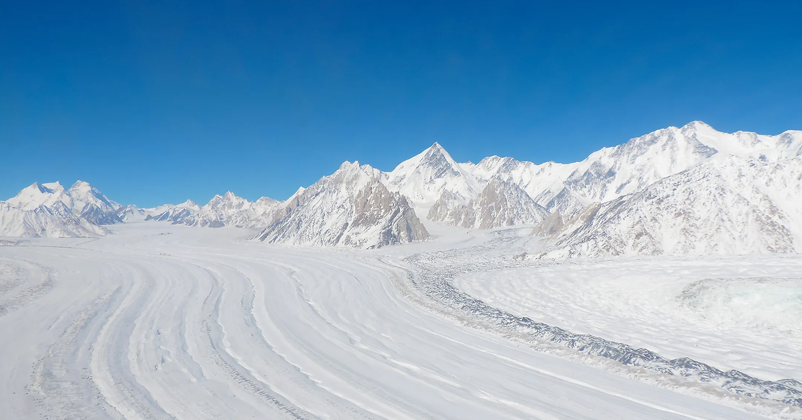13th April 1984; Operation Meghdoot, A story Courage and commitment in the world’s highest battlefield Siachen
| 13-Apr-2022 |

The Siachen Day is observed every year on 13 April to commemorate the courage of Indian Army under 'Operation MEGHDOOT'. This day honors the Siachen Warriors serving motherland strongly and successfully in the coldest and highest battlefield in the world. On this day, India hoisted tricolour at world's highest battlefield.
Operation Meghdoot was an Indian military operation to secure control of the entire Siachen Glacier in Jammu & Kashmir. It was led by Lieutenant General Prem Nath Hoon. The move was approved by Prime Minister Indira Gandhi.
On April 13, 1984, the Indian Army launched ''Operation Meghdoot'' to secure Bilafond La and other passes on the Saltoro Ridgeline from Pakistani aggression.
The first phase of the operation began in March 1984 with the march on foot to the eastern base of the glacier. A full battalion of the Kumaon Regiment and units from the Ladakh Scouts, marched with full battle packs through an ice-bound Zoji La pass for days.

The first unit—tasked with establishing a position on the heights of the glacier—was led by Major (later Lieutenant-Colonel) R. S. Sandhu. The next unit led by Captain Sanjay Kulkarni secured Bilafond La. The remaining forward deployment units then marched and climbed for four days under the command of Captain P. V. Yadav to secure the remaining heights of the Saltoro Ridge. By 13 April, approximately 300 Indian troops were dug into the critical peaks and passes of the glacier. By the time Pakistan troops managed to get into the immediate area, they found that the Indian troops had controlled all three major mountain passes of Sia La, Bilafond La, and by 1987 Gyong La and all the commanding heights of the Saltoro Ridge west of the Siachen Glacier.
Unable to secure a fixture on the Saltoro ridge despite successive attempts over next two decades, the Pakistan Army has foisted one of the biggest myths on their gullible citizenry that they are fighting on the Siachen Glacier. This glacier lies to the east of Saltoro ridgeline held by the Indian Army, denying their adversaries even a peek into the Siachen Glacier.
Since then, the force celebrates a saga of unmatched bravery, heroism, courage, and sacrifice on the world's highest and coldest battlefield. The temperature and avalanches are the biggest challenges for survival at the glacier. The Siachen glacier is considered the most challenging battlefield due to extreme weather conditions and terrain.
Aftermath
The operation resulted in India gaining 70 kilometres (43 mi) long Siachen Glacier and all of its tributary glaciers, as well as three main passes of the Saltoro Ridge immediately west of the glacier, Sia La, Bilafond La, and Gyong La, thus presently giving India the tactical advantage of holding higher grounds. Currently, the Indian Army remains the first and only army in the world to have taken tanks and other heavy ordnance up to such an altitude.

Strategic Importance
The Siachen glacier demarcates central Asia from the Indian subcontinent, and separates Pakistan from China in the region. Due to its control over Saltoro Ride, India is better placed to strike a bargain while settling bilateral territorial disputes with Pakistan in the future.
The Siachen Glacier is considered to be the single largest source of freshwater on the Indian subcontinent. The glacier is the source for the Nubra River that eventually feeds the mighty Indus, which is the major water source that irrigates the Punjab plains in Pakistan.
In 2003, Late Dr APJ Abdul Kalam became the first President and Supreme Commander of the Armed Forces to visit the troops deployed in ‘Operation Meghdoot'.